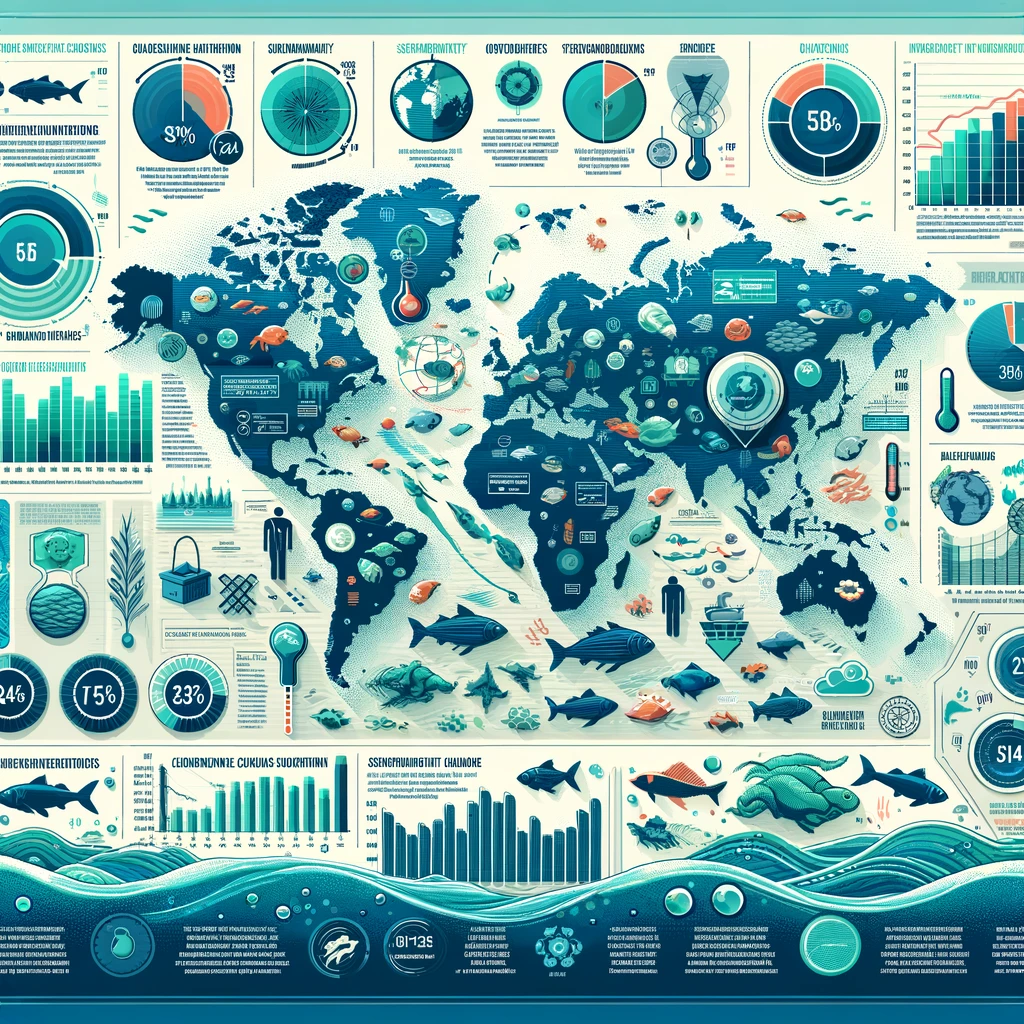The seafood industry is a dynamic and vital sector of the global economy, teeming with opportunities and challenges alike. As consumers become increasingly aware of the environmental and health impacts of their food choices, the industry is undergoing significant transformations. This analysis will dive deep into the currents shaping the seafood market, offering insights and practical tips for stakeholders looking to navigate these waters successfully.
The Growing Tide of Sustainability
Sustainability is no longer just a buzzword in the seafood industry; it’s a crucial driver of consumer preferences and, consequently, industry practices. Consumers are demanding more responsibly sourced seafood, pushing companies to adopt sustainable fishing and aquaculture practices. This shift is not just about environmental stewardship but also about ensuring the long-term viability of seafood supplies. Companies that prioritize sustainability are likely to see increased consumer loyalty and market share.
Aquaculture’s Role in Meeting Global Seafood Demand
Aquaculture, or fish farming, is set to play an increasingly important role in meeting the world’s growing seafood demand. As wild fish stocks decline due to overfishing and environmental changes, aquaculture offers a viable solution for producing high-quality, sustainable seafood. However, the sector faces its own set of challenges, including environmental concerns and the need for technological innovation to improve efficiency and sustainability.
The Digital Wave in Seafood Supply Chains
Technology is revolutionizing the seafood industry, from ocean to table. Digital tools and platforms are making seafood supply chains more transparent, efficient, and traceable. Blockchain technology, for instance, is enabling consumers to trace the journey of their seafood from the farm or fishing vessel to their plate, enhancing trust and accountability. Companies that invest in these technologies can gain a competitive edge by meeting consumer demands for transparency and sustainability.
Navigating Regulatory Currents
Regulatory environments across the globe are also impacting the seafood industry. Policies aimed at protecting marine ecosystems, regulating fishing quotas, and ensuring food safety are reshaping industry practices. Staying abreast of these regulations and adapting business models accordingly is essential for companies to thrive. Proactive engagement with regulatory processes can also open up opportunities for shaping policies that support sustainable and profitable industry growth.
The Economic Impact of Seafood
The seafood industry is a significant economic force, providing livelihoods for millions of people worldwide. It’s essential to understand the economic trends affecting the industry, including shifts in consumer spending, international trade dynamics, and the impact of global events such as pandemics. Economic analyses can help industry stakeholders make informed decisions, from investment to operational strategies.
In conclusion, the seafood industry is navigating through a sea of change, driven by sustainability, technology, regulatory shifts, and economic forces. By understanding these dynamics, stakeholders can identify opportunities for innovation, growth, and sustainability. The key to success lies in adapting to these changes, embracing sustainable practices, and leveraging technology to meet consumer demands. Whether you’re a seafood producer, distributor, retailer, or consumer, staying informed and proactive in this evolving industry landscape is crucial. Dive into the seafood industry analysis today, and discover the vast opportunities that lie beneath the surface.

